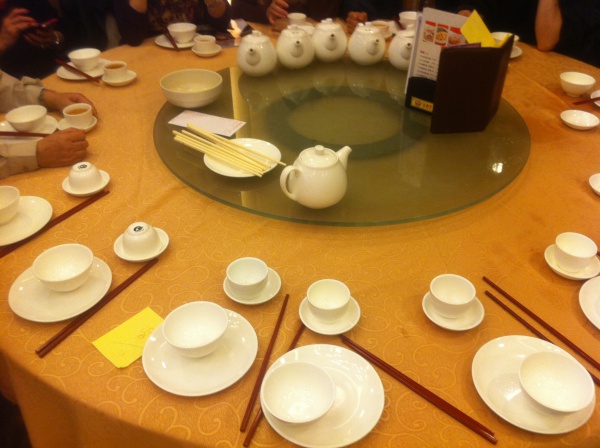Facts About Customs and etiquette in Chinese dining
Chinese dining customs and etiquette revolve around traditional practices that are widely observed in Greater China and have influenced dining habits across East Asia. Here are some key points to help you understand and appreciate these customs:
Dining Setup and Sharing
- Communal Sharing: In a traditional Chinese meal, dishes are usually shared among everyone at the table. This encourages a sense of community and allows everyone to taste a variety of dishes.
- Round Tables: For larger groups, round tables are preferred as they make it easier to share food.
- Lazy Susan Turntables: Often placed in the center of larger tables, these turntables help pass serving dishes around effortlessly.
Place Setting
A typical place setting includes:
- A small teacup.
- A large plate with a small rice bowl.
- Chopsticks.
- A soup spoon.
Additional items like napkins, water glasses, and condiments can vary depending on the restaurant.
Seating and Order of Service
- Formal Seating: Seating is based on seniority and hierarchy. The seat of honor is usually reserved for the host or the eldest person present.
- Meal Sequence: The meal usually starts with beverages and appetizers, followed by soup, main courses, a final course, and dessert.
Etiquette and Manners
- Chopstick Etiquette: How you handle chopsticks is important. For example, it’s considered rude to stick chopsticks upright in a bowl of rice as it resembles incense sticks used in funerals.
- Handling Condiments: Use serving spoons or serving chopsticks to take food from communal dishes to your plate.
- Finish Your Food: It’s polite to finish all the food on your plate, as leaving food is seen as wasteful.
Social Aspects
- Inviting Guests: Sharing meals is a common way to socialize. The host often invites guests to join and share a variety of dishes.
- Alcohol Consumption: Alcohol is usually consumed during toasts. Water and non-alcoholic beverages can be enjoyed at any time.
Paying the Bill
- Who Pays: The person who organizes the meal and invites everyone typically pays the bill, demonstrating generosity and sincerity.
- Tipping: Tipping isn’t usually expected in Chinese countries, but it’s customary in Chinese restaurants in North America.
- Disputes Over the Bill: It’s common for guests to argue over who pays the bill as a way to show honor and assert dominance.
By understanding these customs and etiquette, you can fully appreciate the rich cultural traditions that make Chinese dining a unique and enjoyable experience.
